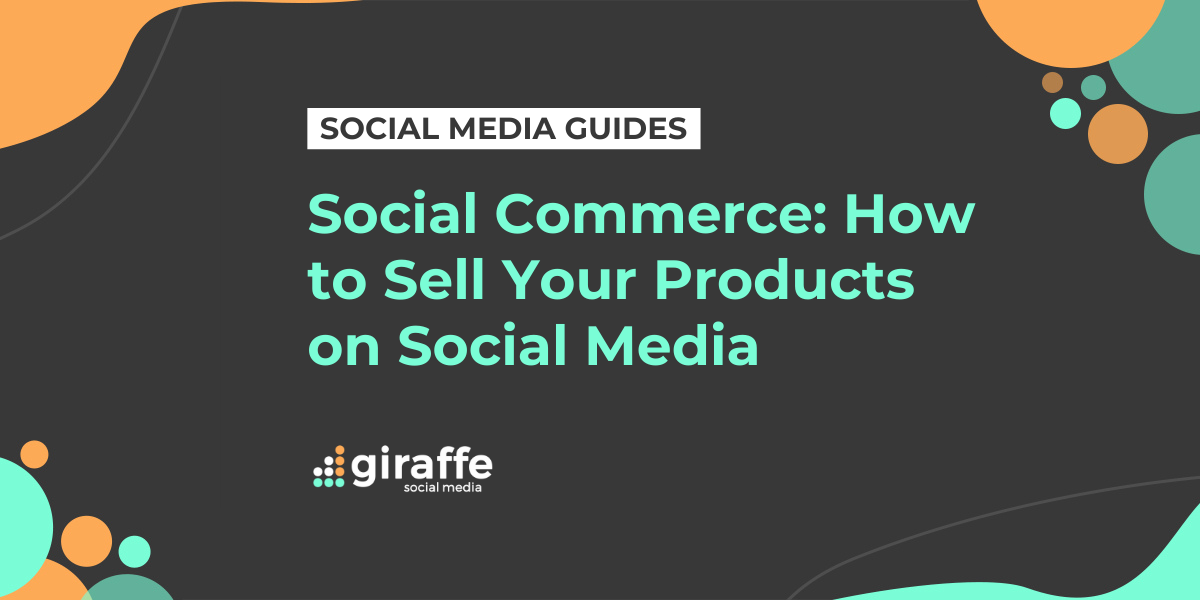The way we shop online is ever-changing. With the rise of social commerce, brands can now sell their products directly through their social media channels with minimal amounts of website redirects.
What is Social Commerce?
Social commerce is the use of social media platforms to sell products and drive sales for eCommerce businesses. Products (or services) are hosted on the social media platform, making purchasing easier than ever. The growth of social commerce buyers in the US alone has increased significantly from 2017 until now, with 45.8 million users in 2017 to 80.1million users in 2020, and is forecasted to grow exponentially in the coming years as the capabilities of social media continue to develop.
Social Commerce on Each Platform
Social commerce is available, in some form and of varying levels, on the big social media sites. The “big 4” platforms for social commerce at the moment are Instagram, Facebook, Pinterest, and Twitter, but plenty of other platforms are following suit.
According to an Instagram user survey, 60% of users say they find out about new products on Instagram. The Instagram Business Shopping feature allows brands to easily advertise their products, and consumers to “shop right at the moment of discovery” and capitalise on the product-focused aspects of Instagram. In Instagram’s 2020 home screen redesign, the Shop tab was added (replacing the previous Activity tab), indicating Instagram’s devotion to social commerce.
The features of Instagram Shopping include: customisable shop pages for business profiles; the ability to tag products in stories, ads, and feed posts; an explore-type Shop tab for users to discover new products and brands; collections for businesses to organise their products; product detail pages; and checking out in-app (in the US); product launch announcements; and the ability to sell products through Instagram Live.
To thrive using Instagram Shopping, make sure to use clear call-to-actions (CTAs) and keep communication with consumers clear and consistent. Make it your own and have fun experimenting with different ways to advertise products, using insights and data to inform future strategy.
In the world of social media marketing, Facebook is still one of the biggest social media platforms. Many brands are utilising Facebook marketing and advertising to sell their products and grow their business, partially due to the massive user base on Facebook.
According to eCommerce platform Shopify, “two-thirds of all social media visits to Shopify stores originate from Facebook.” In May 2020, Facebook launched Facebook Shops, which is linked to the Instagram Shop (if the business uses both Facebook and Instagram). This allows brands to set up one shop across Facebook and Instagram, or just Facebook if they desire.
One of the many benefits of using Facebook Shop for your brand is the ability to give support to customers through Facebook-owned apps such as Messenger, WhatsApp, or Instagram Direct. Customers can even track deliveries through these channels as well.
Pinterest is the perfect opportunity to advertise your products. With Product Pins, you can reach wider audiences with your product marketing, getting your brand in front of a variety of Pinterest users who are in the market for your product offering. As many as 93% of active Pinterest users “said they use Pinterest to plan for purchases” – that is a huge market to tap into for brands whose target audiences use Pinterest.
On Pinterest, there are two main sources for Product Pins – Catalogues and Rich Pins. Catalogues allow you to directly upload a product data source, which “can be added to product groups and promoted as shopping ads.” Rich Pins, on the other hand, are shoppable Pins saved to Pinterest directly from the product page on your website. To use Rich Pins, you must be part of the Verified Merchant Program, and they can’t be made into groups or promoted as shopping ads.
Now that social commerce is booming, Twitter is “looking to ensure that it doesn’t miss the eCommerce boat” by bringing in new eCommerce experiments to the platform. This largely consists of a new Twitter card format, experimenting with organic “tweets that include a big “Shop” button and integrate product details directly into the tweet itself.” Twitter commerce is still new, and we can expect to see updates and new features in the near future. The next stage is likely to include an “on-platform store,” similar to what we see on Instagram and Facebook today.
Snapchat
Snapchat is not a huge player in the social commerce market, but its “Augmented Reality (AR) capabilities are boosting its commerce efforts.” Branded AR lenses help customers visualise what a product will look like on them or in their home, which could lower the volume of customer returns and boost ROI for brands utilising this feature.
Other Snapchat social commerce efforts include the testing of Brand Profiles, “a permanent home for companies on the platform that pools their various assets, such as Lenses and eCommerce stores.” This looks to be testing the waters for more in-depth social commerce capabilities for the platform, including a way to integrate shoppable products into Snapchat Spotlight.
TikTok x Shopify
Towards the end of 2020, TikTok partnered with Shopify to offer commerce abilities to its TikTok marketing users. For the time being, this means businesses using Shopify eCommerce can manage TikTok ads from within Shopify. Eventually, TikTok hopes to expand this partnership “to include other in-app shopping features” as well.
Social commerce on TikTok is still in its infancy, but commerce brands are thriving with a mix of paid advertising and influencer marketing to sell products.
The Value of Social Commerce for Brands
As a whole, social commerce brings value to brands by making the buyers’ journey easier and more readily accessible than ever before. Elaborate online stores are great but doing most or all of the product selling within social media, and as part of a larger social media marketing strategy, is a huge saver of time and effort for brands. In the past 2 years, “social media referral traffic to online stores increased by more than 100%,” and it is predicted that by the end of 2021, “the global social commerce market will increase by about 34%.”





